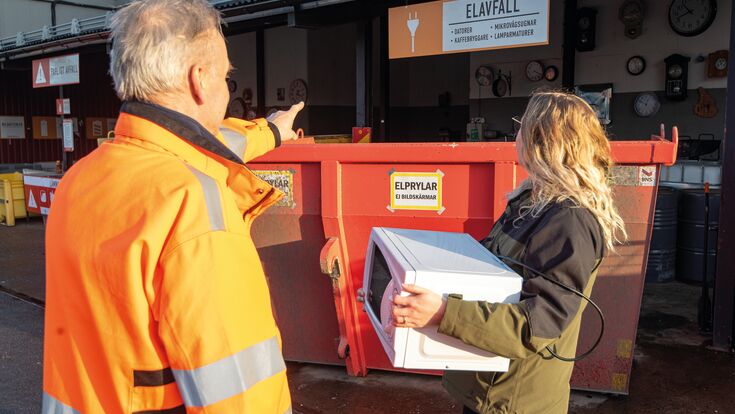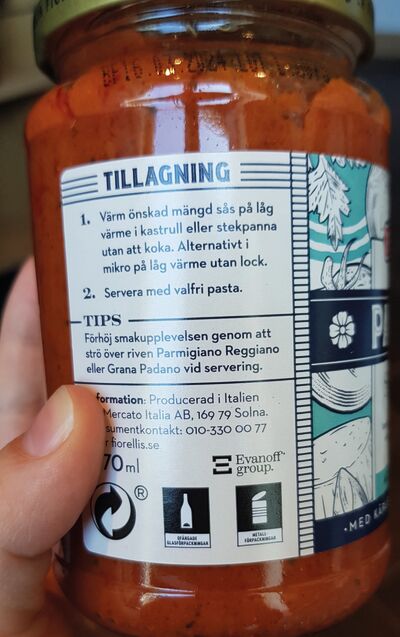Standardised Bin Labels : Harmonised Waste Symbols: Law and order at the waste collection point

Update
In its proposal for a revised Packaging and Packaging Waste Regulation, the European Commission introduced the harmonized bin symbols across all EU member states.
There are areas where diversity doesn’t seem to be the best choice. Waste collection, for example. So far, every country, every municipality may can have its own collection system complete with its own colours and labels. To get rid of this jungle of symbols, Dansk Affaldsforening, (DAF), the Danish waste management association, launched a national pictogram system back in 2017. Unified waste symbols make waste sorting easier for all citizens easier and thus increase material recycling. The system also shows has great benefits for producers, particularly the packaging industry.
Lego-brick system for symbols
After meeting with success, DAF approached the other Nordic municipal waste management associations to ask if they would be interested in joining in. To investigate the relevance of the Danish system, the partners in Denmark, Norway, Sweden, Finland and, Iceland formed initiated a project with co-funding from the Nordic Council of Ministers. “Various surveys were conducted by the different countries to better understand if and how a harmonised system might work,” says project leader Anna-Carin Gripwall from the Swedish waste management association Avfall Sverige. They investigated the interests and opinions of all stakeholders. “The preparatory work has included mapping of the existing pictogram systems in the Nordic countries. It's important to understand the differences between the waste management systems in each country,” Gripwall adds.
The project partners also looked into the design of the pictograms to meet all needs. Now there are approximately 100 different symbols available. “The system consists of three units: symbol, colour, and fraction name, and these can be combined to suit the local requirements. Just like Lego -bricks,”
Gripwall explains. The pictograms are available to download on the websites of the project partners free of charge. Interested municipalities or companies only need to pay the printing costs. This low-threshold approach also guarantees that municipalities may introduce the harmonised system at their own pace. To aid users, the project partners also provide user manuals and guidelines in different languages.
Stay connected- subscribe to our newsletters!
Roll-out in all Nordic countries
After a successful investigation phase, the Nordic countries were ready to introduce the pictogram system. In 2020, first Avfall Norge (the Norwegian waste association), then Avfall Sverige, and Samband (the Association of Local Authorities in Iceland) launched the harmonised system. KIVO (the Finnish waste association) is working on implementing it as soon as possible. All countries are actively promoting the new system. The same symbols are found on residential refuse bins, at recycling stations and centres – and on packages and other products.
In Denmark, 94 out of 98 municipalities have already implemented the system, as have more than 200 additional users, such as manufacturers, festivals, supermarkets, and packaging producers. By 2023, it will be mandatory to use ten of the pictograms used for curbside collection. In Sweden, 200 municipalities and 400 producers, property owners, and others have taken part. In Norway, 13-14 municipalities have started implementing pictograms, as have several large producers. You can find the symbols on most packaging in stores.
The packaging industry is essential
This makes one thing clear: for it to really work and to facilitate waste sorting big time, the packaging industry must also be on board. Ideally, consumers only need to look at the symbol on the packaging to know how to dispose of it. For that reason, the project partners approach packaging producers and others such as housing companies and food and grocery trade companies. “A lot are very interested, which is good. But of course, it takes quite some time to change the production of packaging,” Anna-Carin Gripwall explains and points to companies like Tetra Pak, that support the project: “On basis of previous experience from design changes this will most likely take 2-3 years to implement”, says Helena Lindh, Market Sustainability Expert at Tetra Pak. The company is in dialogue with its customers promoting the use of these symbols on the packages. “Our vision is a world where all beverage cartons are recycled, and we see that clear and uniform communication guiding consumers on how to correctly sort packaging is highly valuable in this journey”, she explains the packaging company’s commitment to the project. “I believe that a uniform European or even Global system would make it easier not only for consumers but also for producers.”
In talking to the industry, Anna-Carin Gripwall noticed a surprising side effect: packaging producers don’t like to label their products as residual waste. To avoid being branded as unsustainable, they turn to more eco-friendly solutions and develop more sustainable packaging.
Another aspect of the project is a legal platform to establish clear rules for all interested parties. For this, DAF, Samband, KIVO and Avfall Sverige are in the process of establishing an association – Eupicto. This platform enables the participating countries to administer, develop and manage the common system.
Some of the Nordic countries are actively participating in the European Comission's joint research centre's working group.Anna-Carin Gripwall, Avfall Sverige
Worldwide interest
The Baltic countries are already in dialogue with the project partners and are looking into ways to introduce the system in their countries. In addition, the EU is looking at the Nordic harmonised pictogram system with interest.
As stated in the EU’s Circular Economy Action Plan 2.0 published in 2020, the Commission will propose a harmonised collection system throughout the EU. A key aspect is the use of common bin colours, harmonised symbols for key waste types, and product labels. The European Commission’s Joint Research Centre (JRC) is currently investigating the possibilities of using the Nordic pictogram system. “Some of the Nordic countries are actively participating in this working group,” Gripwall says.
The Nordic system has garnered a lot of attention worldwide as well. Countries like Brazil, Costa Rica, China, and South Africa have shown an interest in the pictogram system.
“I would like to say that a global roll-out is feasible, in theory,” says Anna-Carin Gripwall. “But to ever be able to achieve that, the entire packaging industry worldwide needs to be on board. So, it’s complicated.” Nevertheless, even though it might be a bit early to evaluate results, she is optimistic that the goal of the project will be reached: to make it easier for everyone, from consumers to producers, to support the proper sorting and recycling of waste.

Update
In its proposal for a revised Packaging and Packaging Waste Regulation, the European Commission introduced the harmonized bin symbols across all EU member states. According to the Commission, the proposal will remove confusion about which packaging belongs in which recycling bin. Each piece of packaging will carry a label indicating what the packaging is made of and which waste stream it should go in. The same labels will be placed on waste collection containers. The same symbols will be used throughout the EU. As of May 2023 the proposal is considered by the European Parliament and the Council, in the ordinary legislative procedure.
The article was first published on January 10th 2022


